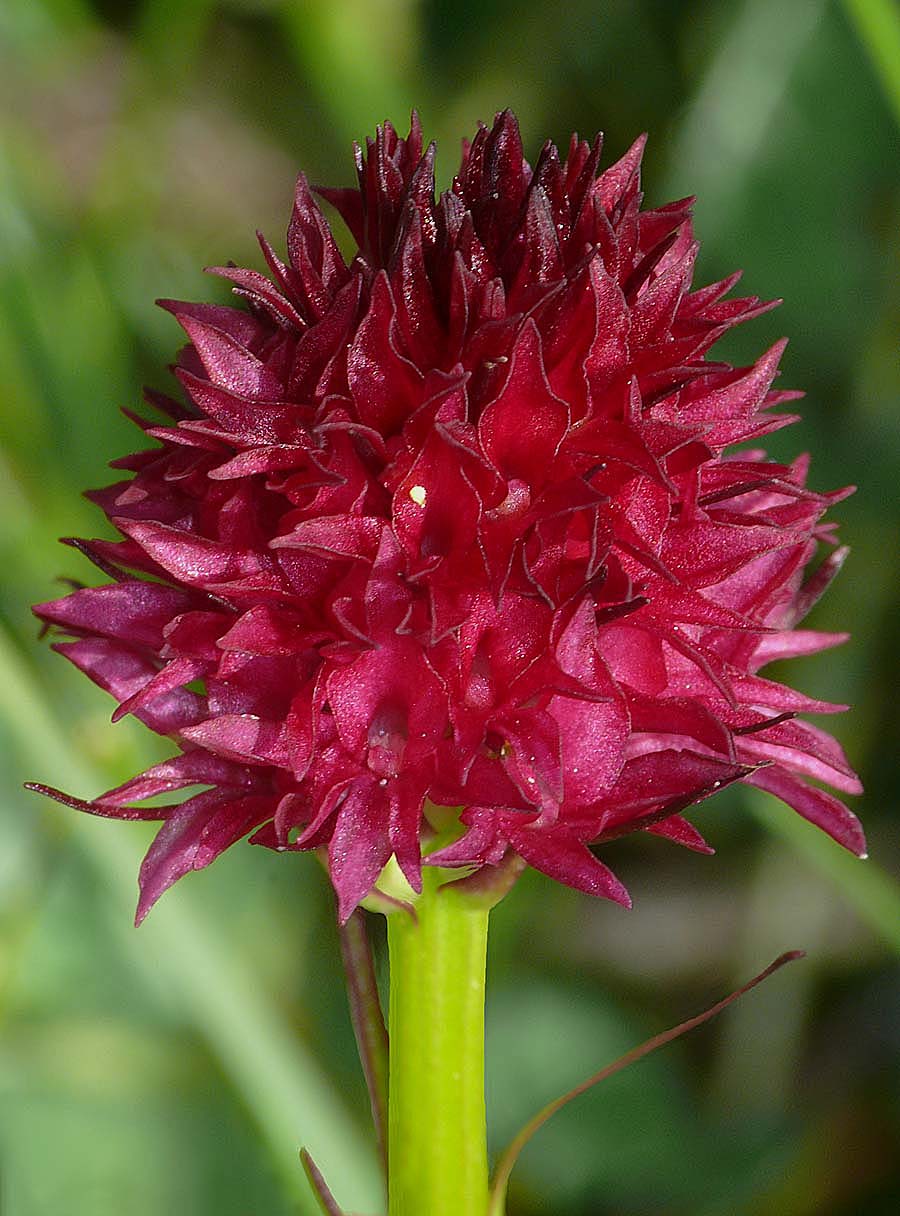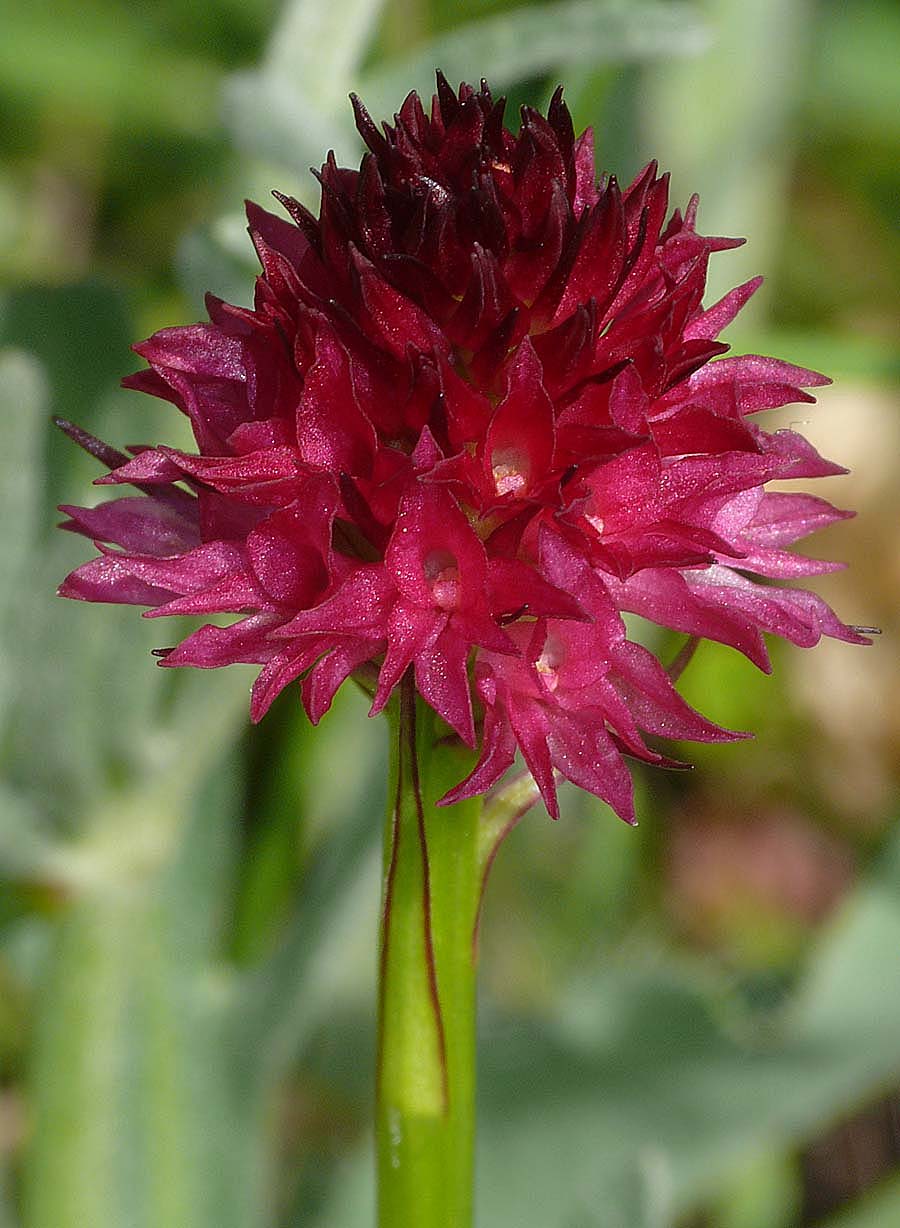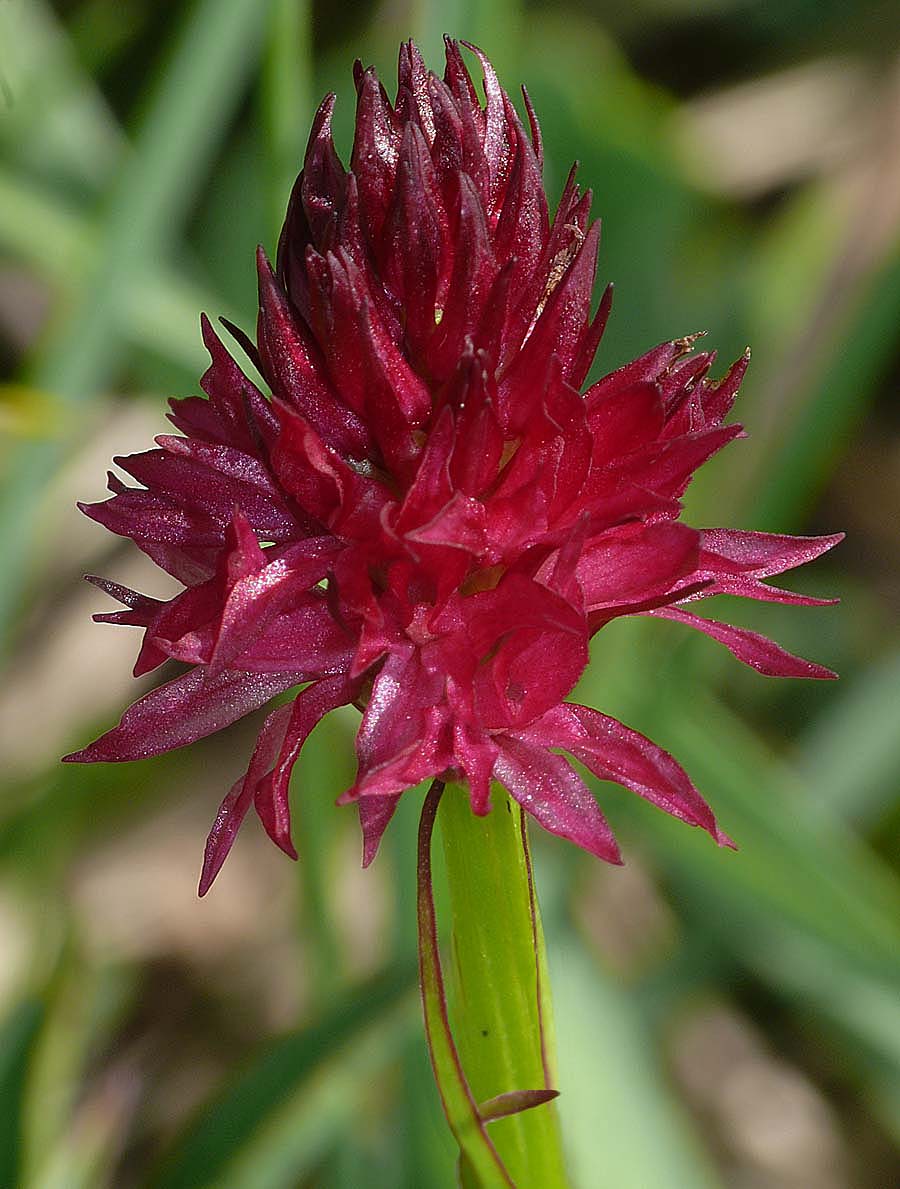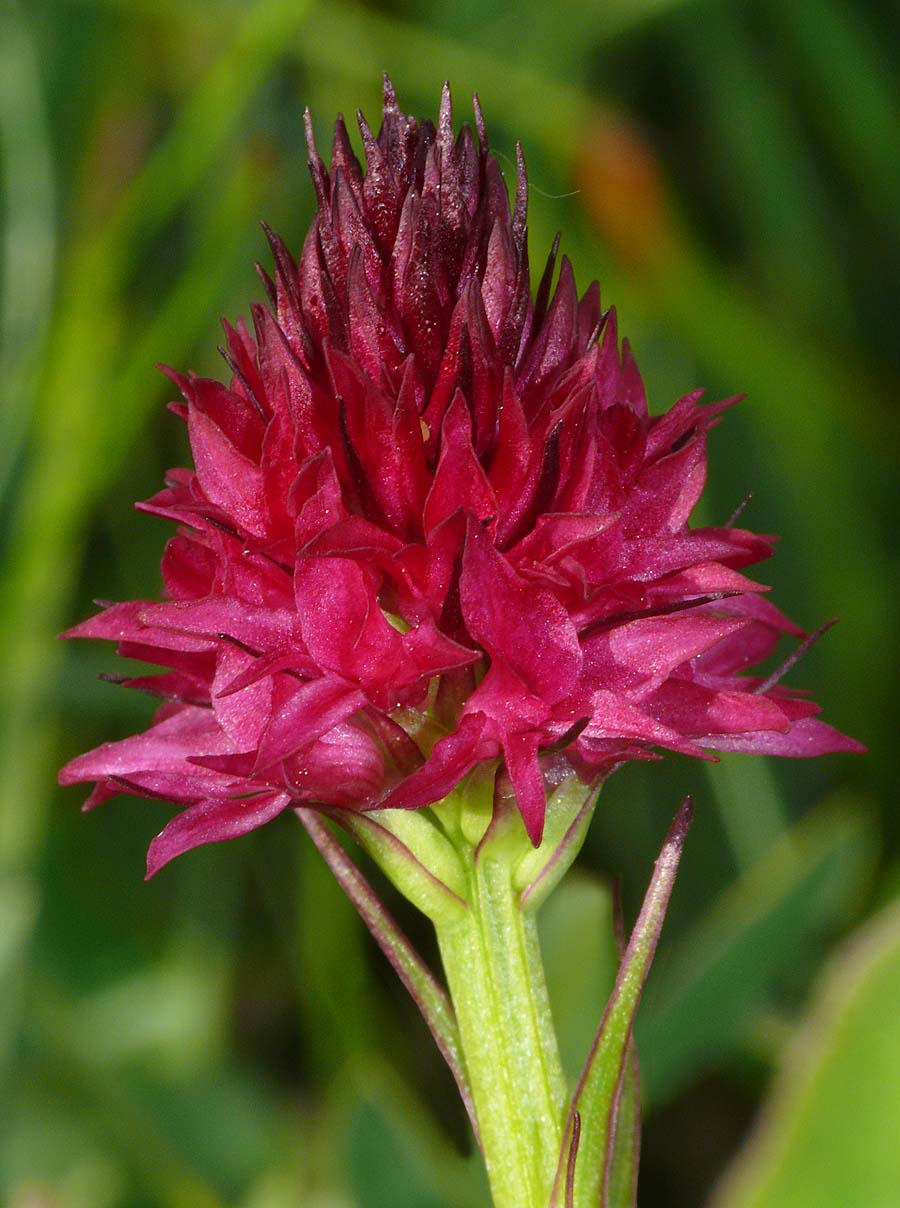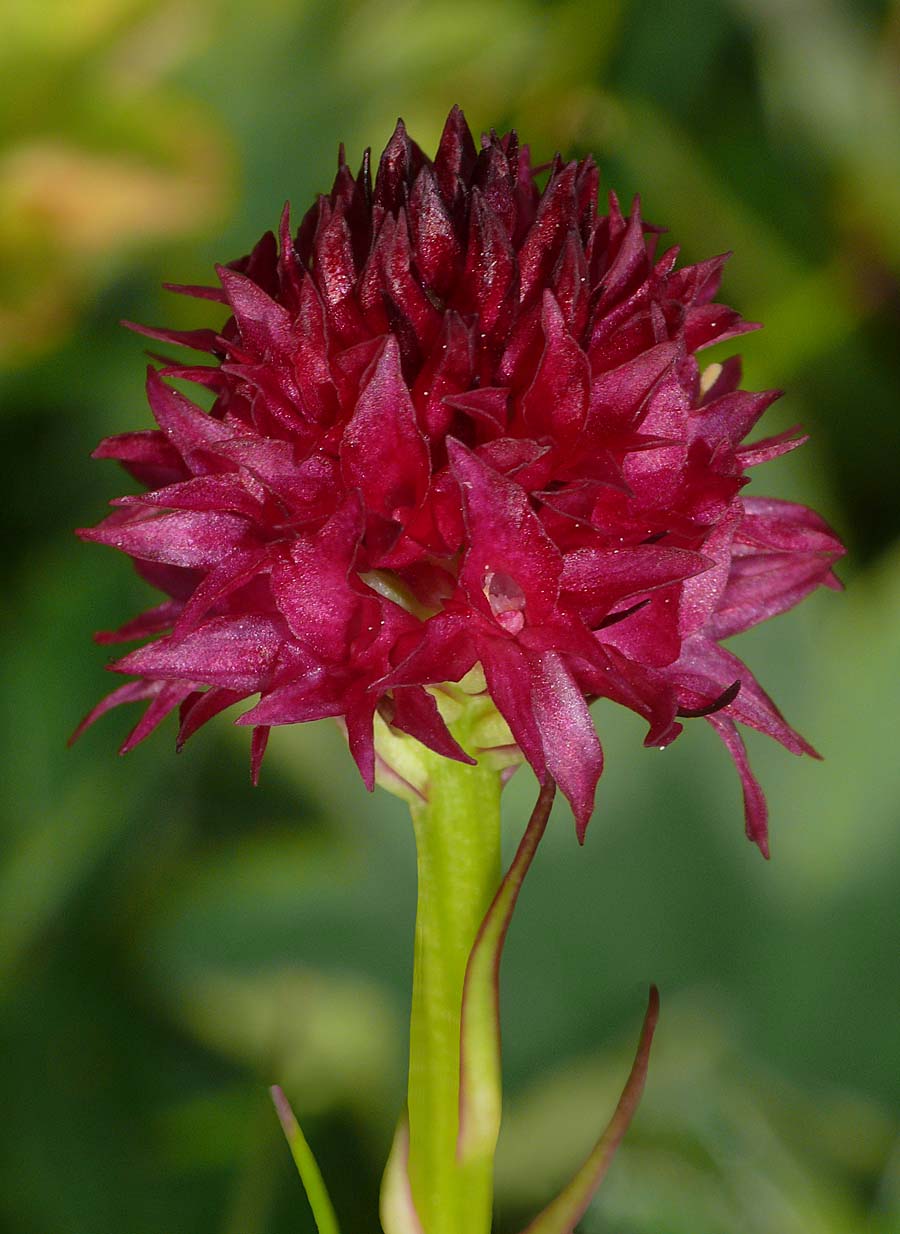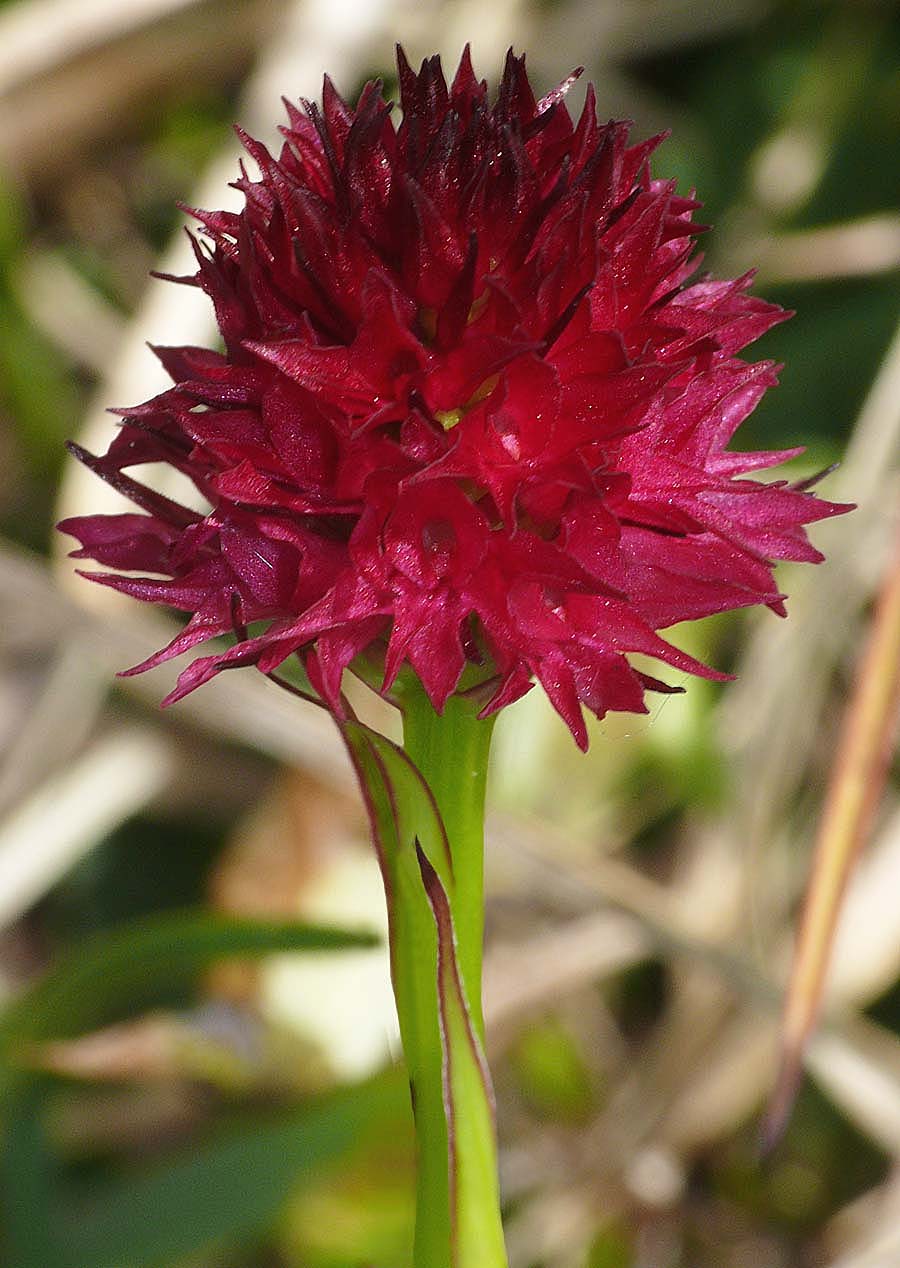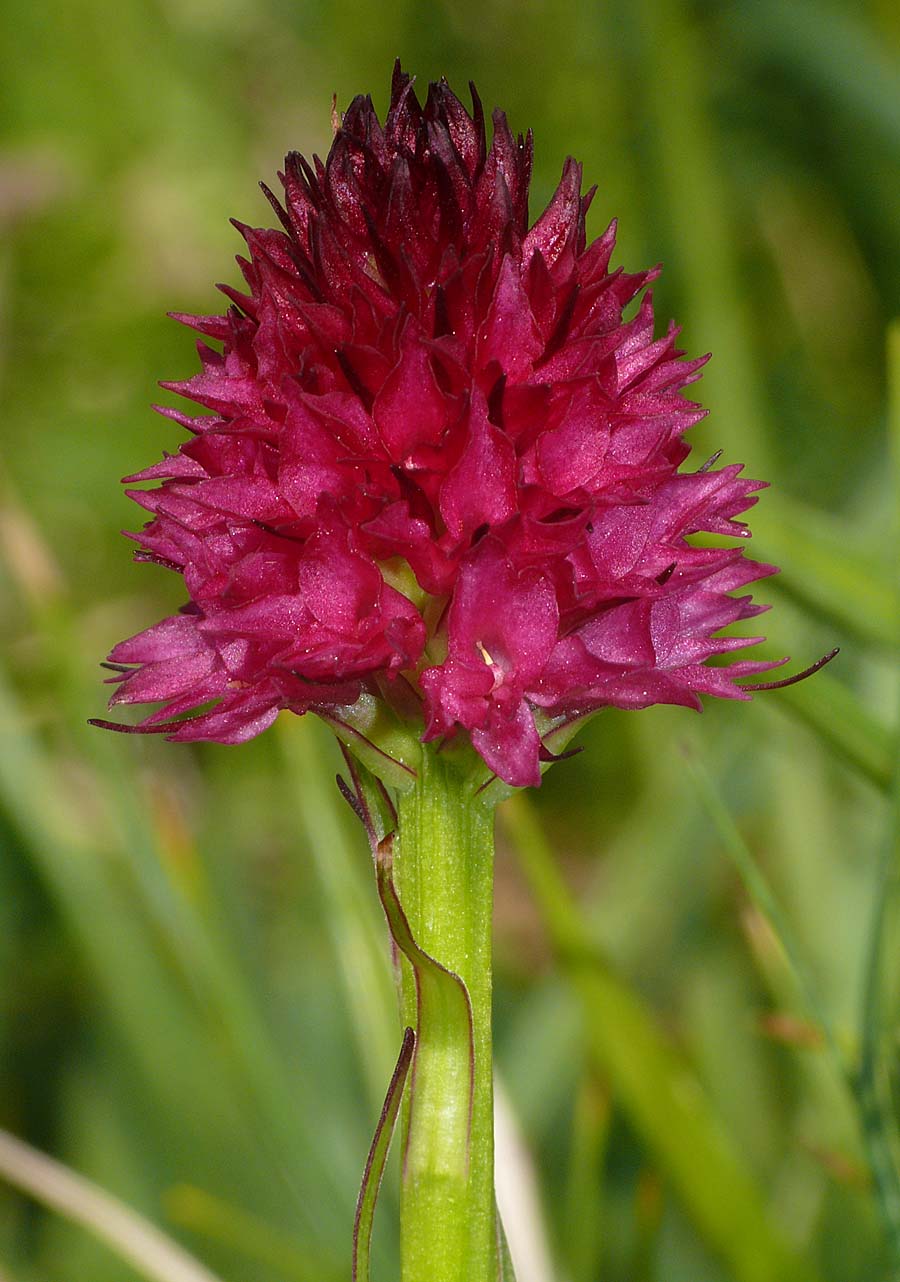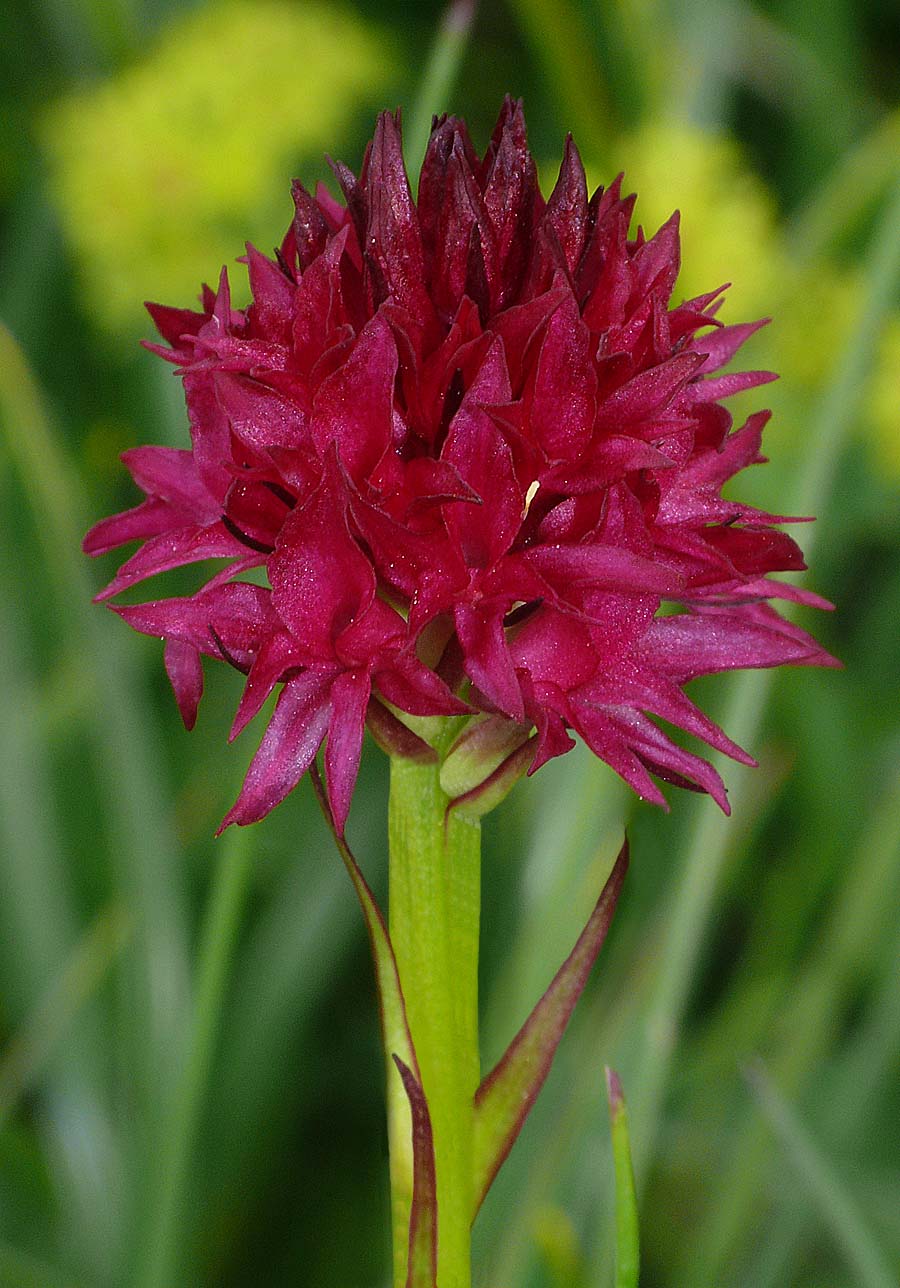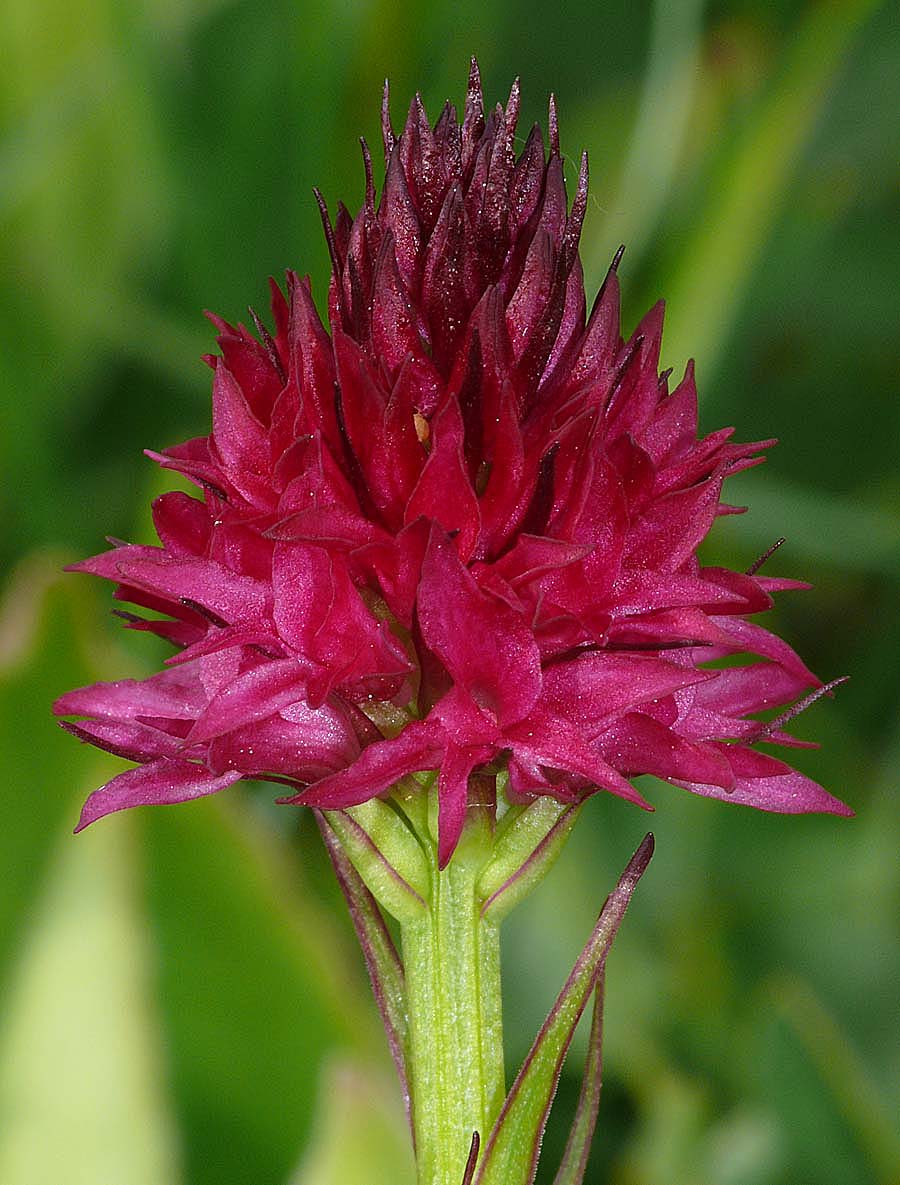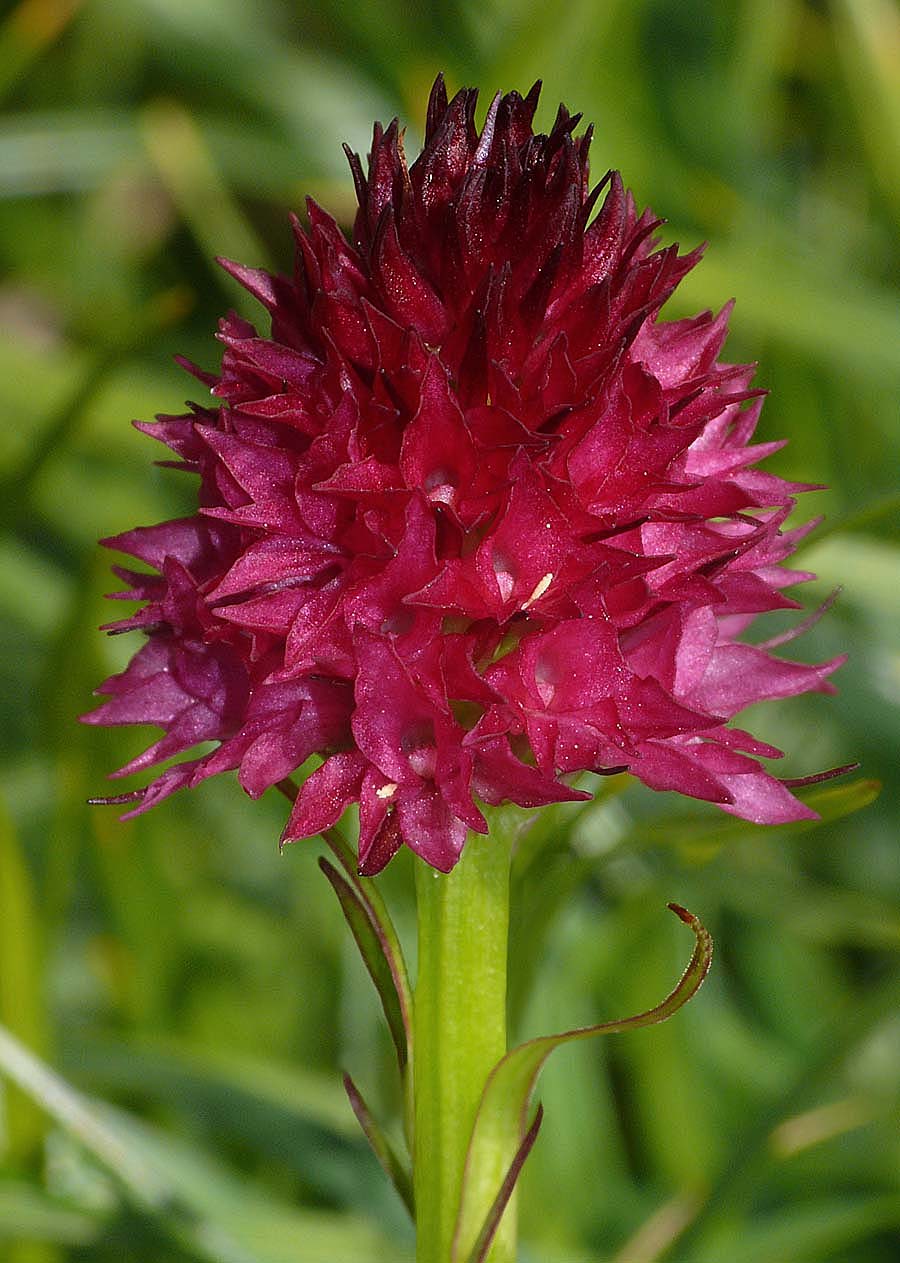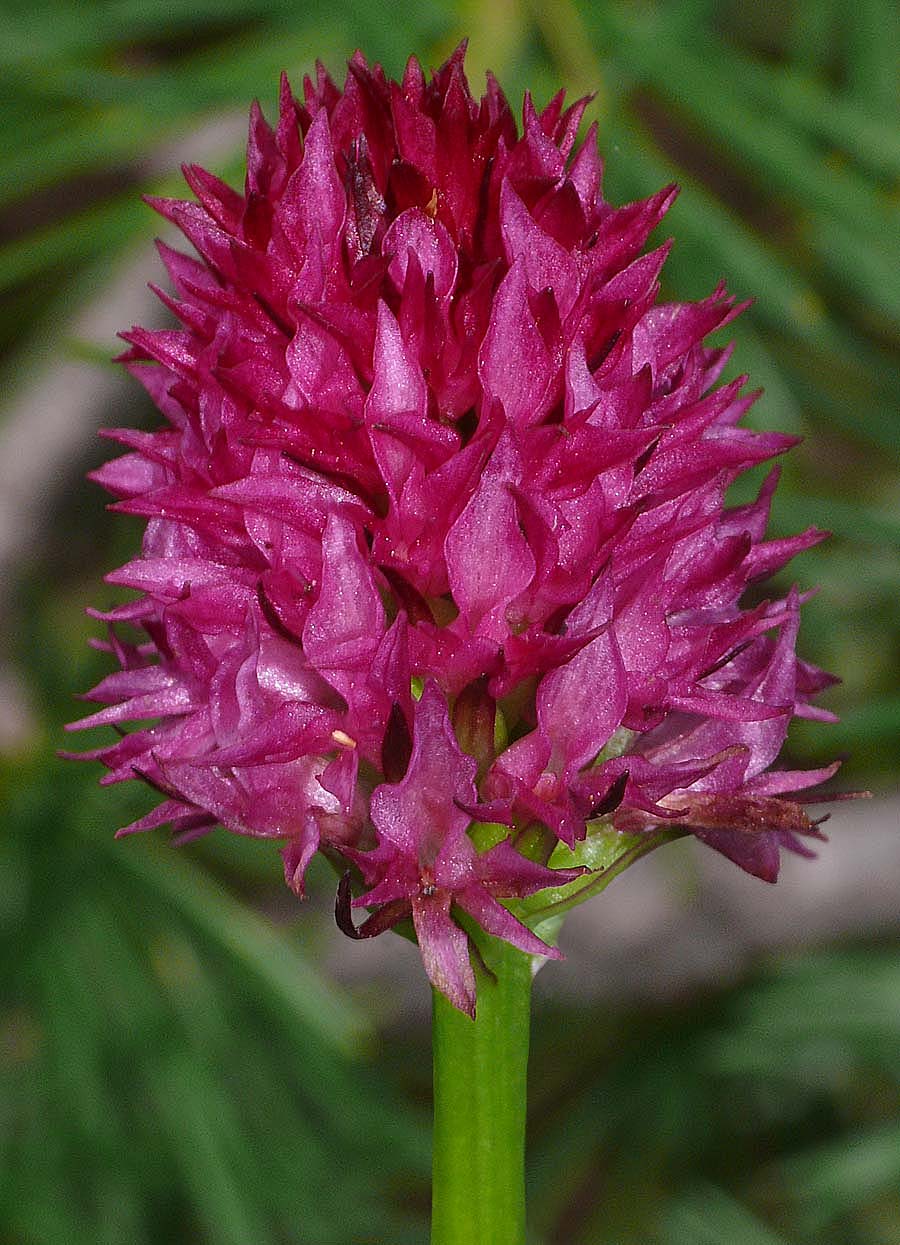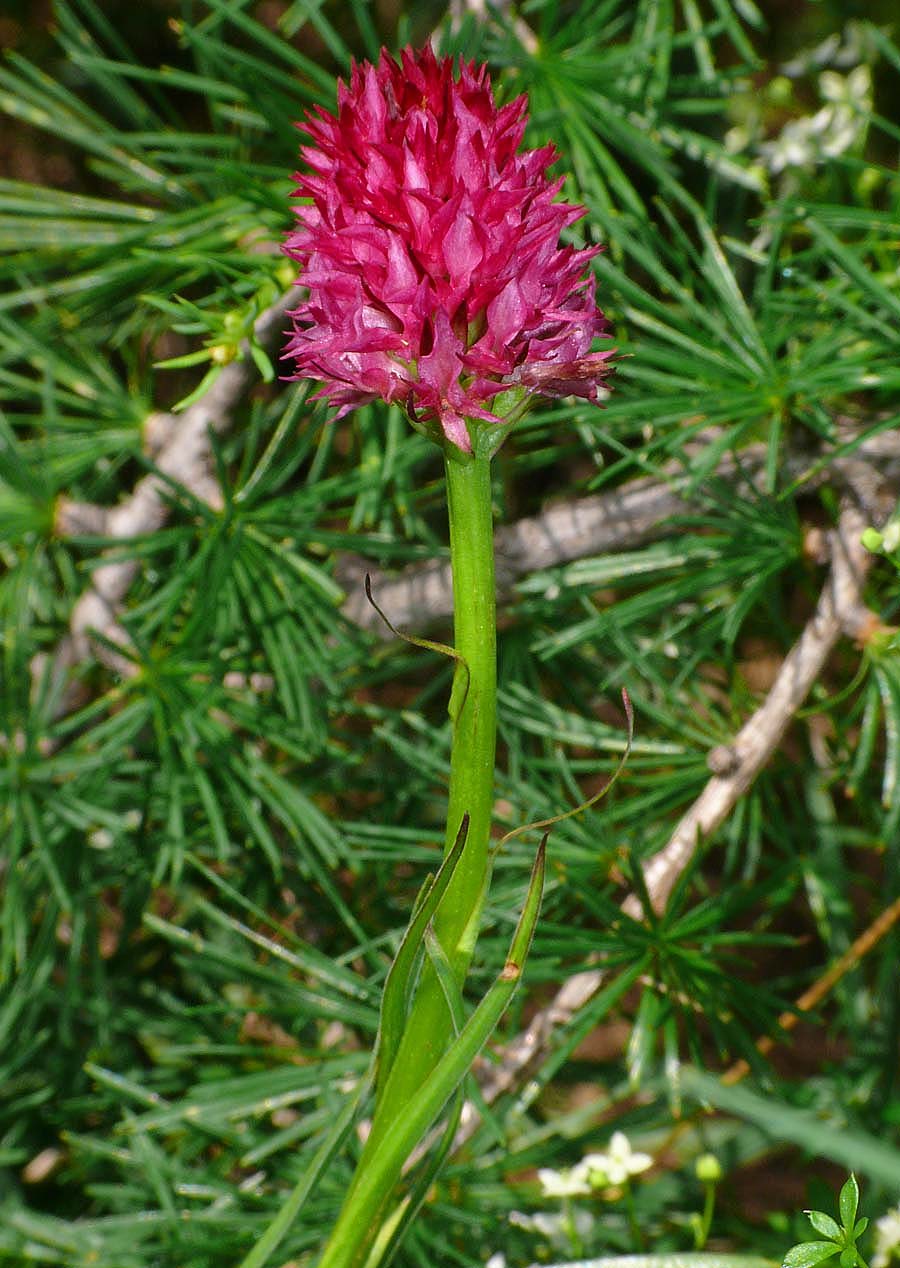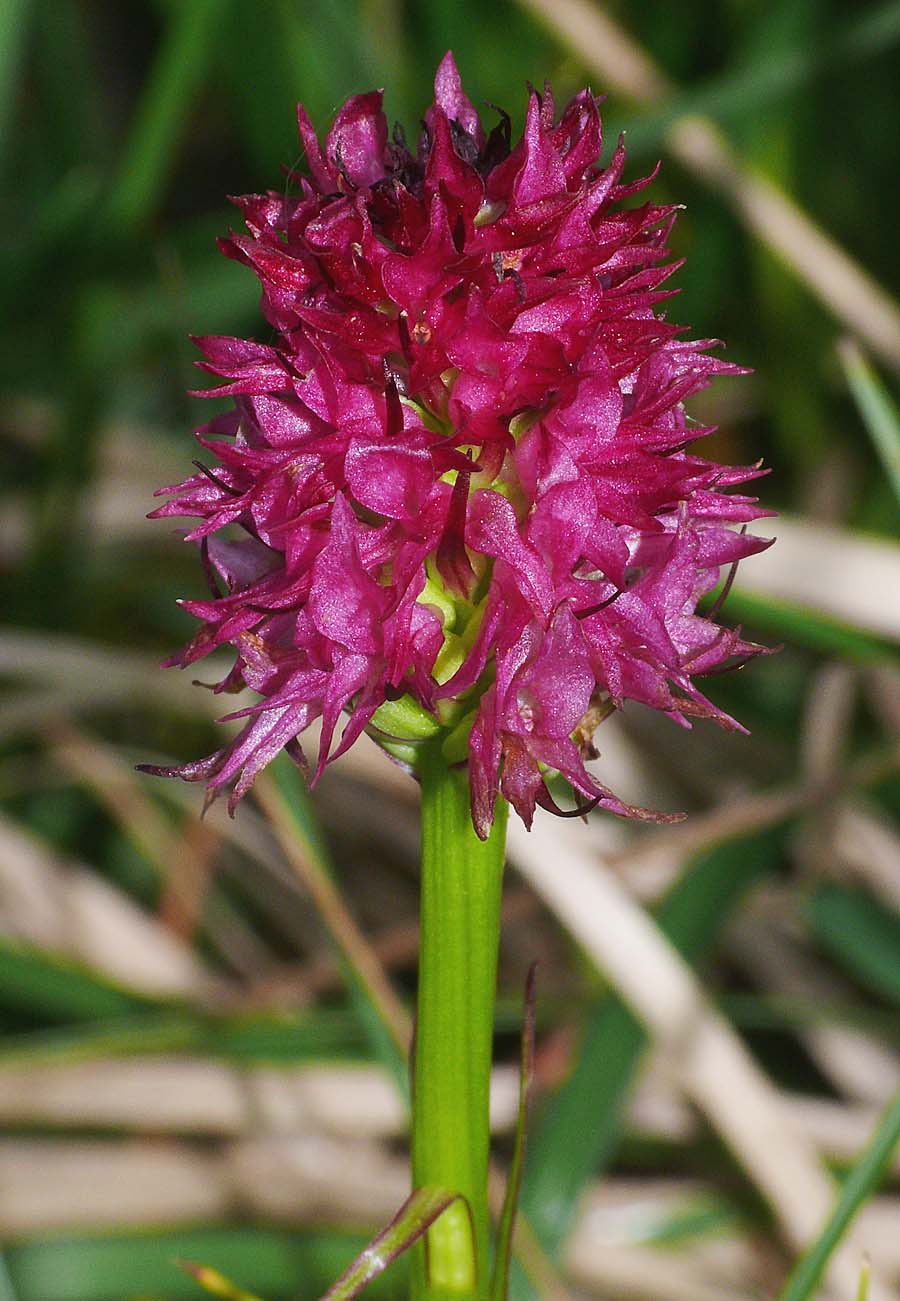This species was first described by
Foelshe, Heidtke and Gerbaud from the Dolomites in 2011 and its name is
a reference to the species habitat preference for damp conditions. It is an apomictic taxon attached to the G. nigra group of the genus Gymnadenia.
G. hygrophila has been the subject of considerable research in recent years and the species was notably included within a wider paper by Wolfram Foelshe in 2014. The validity of its status as a full species was not universally accepted and amongst the sceptical were Messrs Lorenz and Perazza who in 2012 refered to it as Nigratella miniata ssp miniata var dolomitensis. It was first recognized in 2004 as part of a collection of specimens being collected for study during research on the variability of G. rubra (now G. miniata). Analysis suggested however that this particular specimen was in fact something quite distinct and further study was instigated, leading to its adoption as a species in 2011.
Its range is not fully understood but currently known with certainty from a handful of sites in the Dolomites of southern Trentino and on the Trenchling massif of central Austria. As has already been mentioned it shows a preference for damp, though not wet conditions and the plants illustrated belonged to a small colony growing either side of a small stream, in a sheltered position that would have retained snow cover later than the surrounding environs. G. hygrophila is a small orchid with vivid red flowers that form a domed head, approximately as long as it is wide. As can be seen from the final three photographs, these flowers fade slightly with age, taking on an overall magenta hue before completely shriveling.
G. hygrophila is a relatively late flowerer, commencing in late June and finishing by the end of July.
G. hygrophila has been the subject of considerable research in recent years and the species was notably included within a wider paper by Wolfram Foelshe in 2014. The validity of its status as a full species was not universally accepted and amongst the sceptical were Messrs Lorenz and Perazza who in 2012 refered to it as Nigratella miniata ssp miniata var dolomitensis. It was first recognized in 2004 as part of a collection of specimens being collected for study during research on the variability of G. rubra (now G. miniata). Analysis suggested however that this particular specimen was in fact something quite distinct and further study was instigated, leading to its adoption as a species in 2011.
Its range is not fully understood but currently known with certainty from a handful of sites in the Dolomites of southern Trentino and on the Trenchling massif of central Austria. As has already been mentioned it shows a preference for damp, though not wet conditions and the plants illustrated belonged to a small colony growing either side of a small stream, in a sheltered position that would have retained snow cover later than the surrounding environs. G. hygrophila is a small orchid with vivid red flowers that form a domed head, approximately as long as it is wide. As can be seen from the final three photographs, these flowers fade slightly with age, taking on an overall magenta hue before completely shriveling.
G. hygrophila is a relatively late flowerer, commencing in late June and finishing by the end of July.
